Units
Armoured Regiment Structure
- Details
- Created: 12 October 2006
- Written by Table of Equipment
- Hits: 28821
Infantry Battalion Structure
- Details
- Created: 12 October 2006
- Written by Table of Equipment
- Hits: 77121
Regiment of Artillery
- Details
- Created: 12 October 2006
- Written by Super User
- Hits: 28106
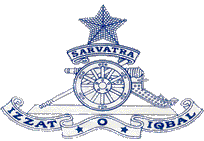
Sarvatra Izzat-o-Iqbal
Armoured Corps
- Details
- Created: 12 October 2006
- Written by Super User
- Hits: 72141
Introduction
The Indian Army fields 63 Armoured Regiments and the list below includes only 61 regiments, excluding the President's Body Guards. From the 65th Armoured Regiment onwards, the term 'Cavalry' and 'Lancer' was dispensed with and all subsequent raisings are designated just as Armoured Regiment (AR). Several regiments have, or have had, independent reconnaissance squadrons which are a combination of tanks or armoured cars, infantry, and heavy mortars. These serve, or have served, as reconnaissance units for armoured divisions, independent armoured brigades, and other formations. The listing below is organised on numerical seniority and is not based on the seniority dates of the regiments;
- President's Bodyguards
- 1 Horse: Raised as the Skinner's Horse in 1803.
- 2 Lancers: Raised as the Gardner's Horse in 1809.
- 3 Cavalry: Raised as the 5th Bengal Cavalry in 1841. The 5th Bengal Cavalry and the 8th Bengal Lancers were amalgamated to form the 3rd Cavalry in 1922.
- 4 Horse: Raised in 1857 by Major William Hodson of the Guides Cavalry and was hence named Hodson's Horse. Also known as the Duke of Cambridge's Own Lancers. The royal title was dropped in 1950, when India became a Republic.
- 5 AR: Original 5 Probyn's Horse was handed over to Pakistan in 1947. Re-raised in 1983.
- 6 AR: Original 6 DCO Lancers was handed over to Pakistan in 1947. Re-raised in 1984.
- 7 Cavalry: Raised as the 2nd Regiment of Madras Native Cavalry in 1784. It was also designated as the 3rd Madras Lancers and the 28th Light Cavalry at various times, until 1922, when it was rechristened as the 7th Cavalry. The title, 28th Light Cavalry, was conferred at the time of the 1903 re-organisation of the Indian Army.
- 8 Cavalry: Raised as the 5th Madras Native Cavalry of the Madras Presidency Army in 1787. At the time of the 1903 re-organisation of the Indian Army, the regiment was re-named as the 26th Light Cavalry and later became known as King George's Own Light Cavalry in 1910. Later in 1922, it became known as the 8th King George's Own Light Cavalry, when it was amalgamated with the 30th Lancers (Gordon's Horse). The royal title was dropped in 1950, when India became a Republic and the term 'Light' was dropped after 1965.
- 9 Horse: Raised as the Royal Deccan Horse in 1790.
- 10 AR: Original 10 Guides Cavalry was handed over to Pakistan in 1947. Re-raised in 1984.
- 11 AR: Original 11 PAVO Lancers was handed over to Pakistan. Re-raised in 1984.
- 12 AR: Original 12 Cavalry was converted into a training regiment in 1937, then later disbanded in 1941 and then re-raised in 1984.
- 13 AR: Original 13 Lancers was handed over to Pakistan in 1947. Re-raised in 1984.
- 14 Scinde Horse: Raised in 1839 and later renamed as the 14 Prince of Wales' Own Scinde Horse. The royal title was dropped in 1950, when India became a Republic.
- 15 AR: Original 15 Lancers converted into a training regiment in 1937, was later disbanded in 1941 and then re-raised in 1985.
- 16 Cavalry: Raised in 1776 as the 16 Light Cavalry.
- 17 Poona Horse: Raised in 1817 as the 17th Queen Victoria's Own Poona Horse. The royal title was dropped in 1950, when India became a Republic. The regiment has earned two Param Vir Chakras by Lt. Col. A.B. Tarapore and 2nd Lt. Arun Khetarpal. Regimental History --> Official History of the 17th Horse
- 18 Cavalry: Raised in 1846 as the 18th King Edward VII's Own Cavalry. The royal title was dropped in 1950, when India became a Republic.
- 19 AR: Original 19 Lancers was handed over to Pakistan in 1947. Re-raised in 1985.
- 20 Lancers: Raised in 1856, converted into a training regiment in 1937, was later disbanded in 1941 and then re-raised in 1956.
- 21 Central India Horse: Raised in 1858 as the 21 King George's Own CIH. The royal title was dropped in 1950, when India became a Republic.
- 40 AR: Raised as the Skinner's Horse in 1980. Raising date is uncertain.
- 41 AR: Raised in 1980.
- 42 AR: Raised in 1981.
- 43 AR: Raised in 1981.
- 44 AR: Raised in 1981.
- 45 Cavalry: Raised in 1965. Traces lineage to the old 45 Cavalry.
- 46 AR: Raised in 1982.
- 47 AR: Raised in 1982.
- 48 AR: Raised in 1982.
- 49 AR: Raised in 1983.
- 50 AR: Raised in 1989.
- 51 AR: Raised in 1989.
- 52 AR: Raised in 1994.
- 53 AR: Raised in ?
- 61 Cavalry: Raised from the amalgamation of Indian State Forces' cavalry regiments.
- 62 Cavalry: Raised on 31 March 1957 at Ambala Cantonment by Lieutenant Colonel R S Butalia. Drawn from the existing cavalry regiments of the time, the 62 Cavalry is constituted from the three warrior classes of the Sikh, Jat and Dogra castes. The Regiment was born as the first armoured regiment to be raised in Independent India and was the first Indian armoured regiment to be raised entirely on tanks. The regiment was honoured by President Neelam Sanjeeva Reddy, at its Silver Jubilee on 31 March 1981. The regiment celebrated its Golden Jubilee in an impressive mounted parade, which was reviewed by General Joginder Jaswant Singh, COAS on 31 March 2006. During the parade, the Army Chief bestowed the Regiment with a Standard in recognition of its achievements.
- 63 Cavalry: Raised in 1956.
- 64 Cavalry: Raised in 1956. First post-1965 (Indo-Pak War) raising.
- 65 AR: Raised in 1966.
- 66 AR: Raised in 1966.
- 67 AR: Raised in 1967.
- 68 AR: Raised in 1967.
- 69 AR: Raised in 1968.
- 70 AR: Raised in 1968 as an ATGM regiment on SS-11-B1s. Converted in 1975 to the 70th Armoured Regiment.
- 71 AR: Raised in 1971.
- 72 AR: Raised in 1971.
- 73 AR: Raised in 1971.
- 74 AR: Raised in 1972.
- 75 AR: Raised in 1972.
- 76 AR: Raised in 1985.
- 81 AR: Raised on 01 October 1973. Raised initially with five castes - Marathas, Rajputs, Jats, Ahirs and Gujjars - the regiment was the first armoured unit to convert to an all-India, all-class composition. In keeping with its secular traditions, the regiment performs the consecration of standard through a Pandit, a Maulvi, a Granthi and a Priest. Another unique feature is the regimental song set to a melodious tune, Risaala Dilwaala (Brigade With a Heart), composed by the eminent film maker-lyricist duo of J Om Prakash and Anand Bakshi. The regiment was honoured by President Dr APJ Abdul Kalam on 16 May 2005, who conferred a Standard, in recognition of its outstanding services in the battlefield and also off the combat zone.
- 82 AR: Raised in 1975.
- 83 AR: Raised in 1976.
- 84 AR: Raised in 1976.
- 85 AR: Raised in 1976.
- 86 AR: Raised in 1977.
- 87 AR: Raised in 1979.
- 88 AR: Raised in 1980.
- 89 AR: Raised in 1980.
- 90 AR: Raised on 15 August 1979 by amalgamating three independent reconnaissance squadrons of the 17 Poona Horse (90th Independent Recce Squadron), the 18 Cavalry (92nd Independent Recce Squadron) and the 65 AR (90th Independent Recce Squadron).
Army Aviation Corps
- Details
- Created: 12 October 2006
- Written by Super User
- Hits: 41919
Suveg Va Sudrid
Counter Terrorist Units
- Details
- Created: 12 October 2006
- Written by Super User
- Hits: 10852
More Articles ...
Subcategories
-
Corps
- Article Count:
- 1
-
Infantry Regiments
- Article Count:
- 2
-
Armoured Regiments
- Article Count:
- 1
-
Combat and Supporting Arms
- Article Count:
- 1
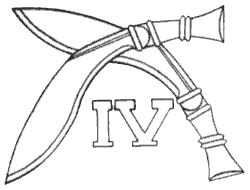
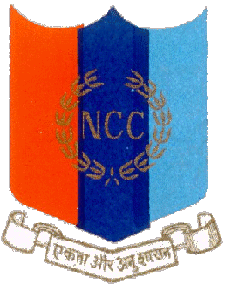
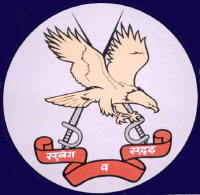
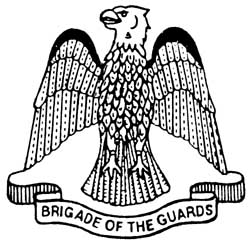
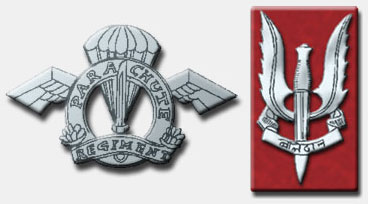
 Units
Units